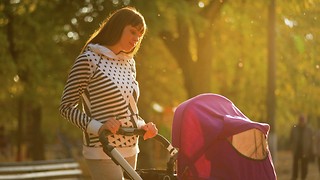The Wizard of Oz
ADC Mainshow
Those of you old enough to remember walking into your College’s Halloween Bop last year to find that everyone had come as Heath Ledger’s Joker will understand. That is understand and empathise with what it was like to discover the cast of The Wizard of Oz with their faces smeared with red and white clown make up. Directed by Nick Waters, this musical was keen from the start to stand out as something different, even something dark.
Anyone unfamiliar with the story could do no better than watch Victor Flemming’s 1939 film version. The optimistic, escapist Metro-Goldwyn-Mayer movie, with its twee ‘there’s no place like home’ message, has a special place in countless hearts.
Waters makes it clear in a note in the programme that he chose not attempt “to replicate the iconic MGM production on stage”. This is an understandable decision – why try to emulate such an intimidating treasure? But it was also a risky one, given that a sizeable part of the audience to any Wizard of Oz show will have largely made the journey to the theatre just so they can hum along with the songs. Present anything deviating too far from the expected menu, and the audience will be alienated.
Georgina Hunt was a solid but forgettable Dorothy. Still, her voice delivered what was required for the songs; this was true of most of the cast. Robert Jacobs’ Scarecrow was idiosyncratic and endearing. His raspy delivery and subtle, jerky movements concealed an inexplicable lack of straw. Jonathan Padley’s lion, part thesp, part fashionista, was a highlight. Sara Boomsma perhaps took her job description rather too literally, and her Tin Woman had none of the character displayed by Jack Haley’s Tin Man in the MGM movie.
James Sharpe carried the production as the Wizard of Oz, together with Ben Kavanagh as the Wicked Witch of the West – yes, the clever reversal of gender norms was all in a day’s work for this production. (Anyone who saw the kidnapped Dorothy strapped into a wheelchair will forgive me that jibe at the musical’s PC credentials). Sharpe’s disembodied voice alone exuded a palpable magnetism that made his relish for the part evident. But the fact that a guy behind a curtain with a microphone was able to upstage the main cast members did not reflect well on the production as a whole.
The puppet Munchkins designed by Annie Brooks were unquestionably the highlight of the production, but even the engaging and initially hysterical scene featuring them dragged on considerably. Waters obviously realised in rehearsals that he was on to a good thing.
All that is asked of a stage version of The Wizard of Oz is to let the beloved songs speak for themselves. Sadly, these were in the main drowned out by their own bleary backing music, to the extent that once or twice the singers stopped trying to compete.
Having the Lion cower behind a sign with the MGM logo on it was a nice touch. But the production spent too long hiding behind a homage to 1930s Hollywood, and too much effort imagining that it was “you know… like … dark”. The spirit of the original was lost somewhere along the way. Walters should have kept to the yellow brick road. Features / Should I stay or should I go? Cambridge students and alumni reflect on how their memories stay with them15 December 2025
Features / Should I stay or should I go? Cambridge students and alumni reflect on how their memories stay with them15 December 2025 News / Dons warn PM about Vet School closure16 December 2025
News / Dons warn PM about Vet School closure16 December 2025 News / Cambridge study finds students learn better with notes than AI13 December 2025
News / Cambridge study finds students learn better with notes than AI13 December 2025 News / News In Brief: Michaelmas marriages, monogamous mammals, and messaging manipulation15 December 2025
News / News In Brief: Michaelmas marriages, monogamous mammals, and messaging manipulation15 December 2025 Comment / The magic of an eight-week term15 December 2025
Comment / The magic of an eight-week term15 December 2025









